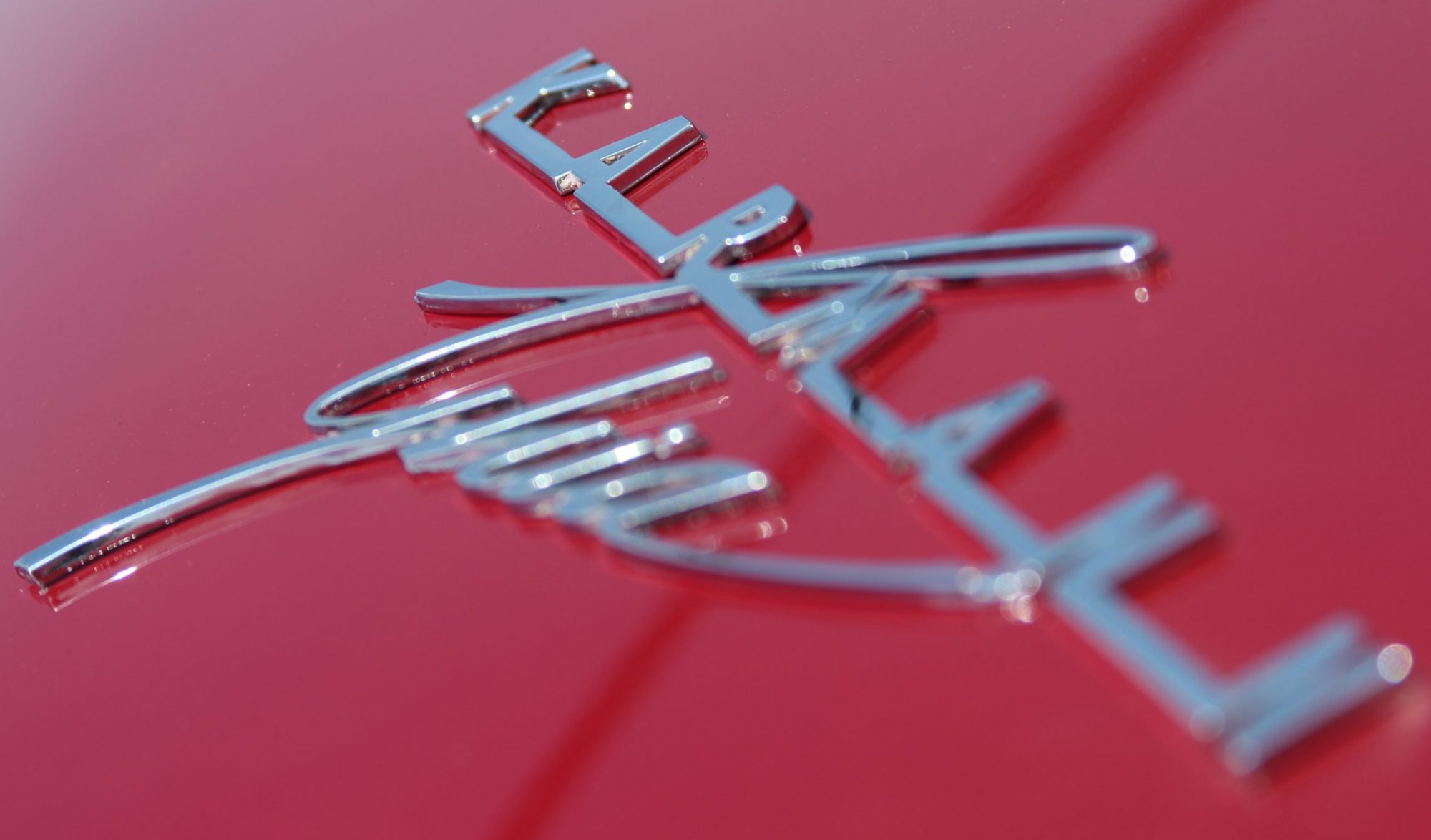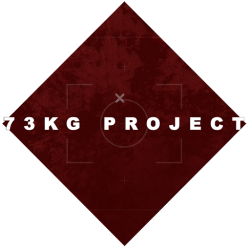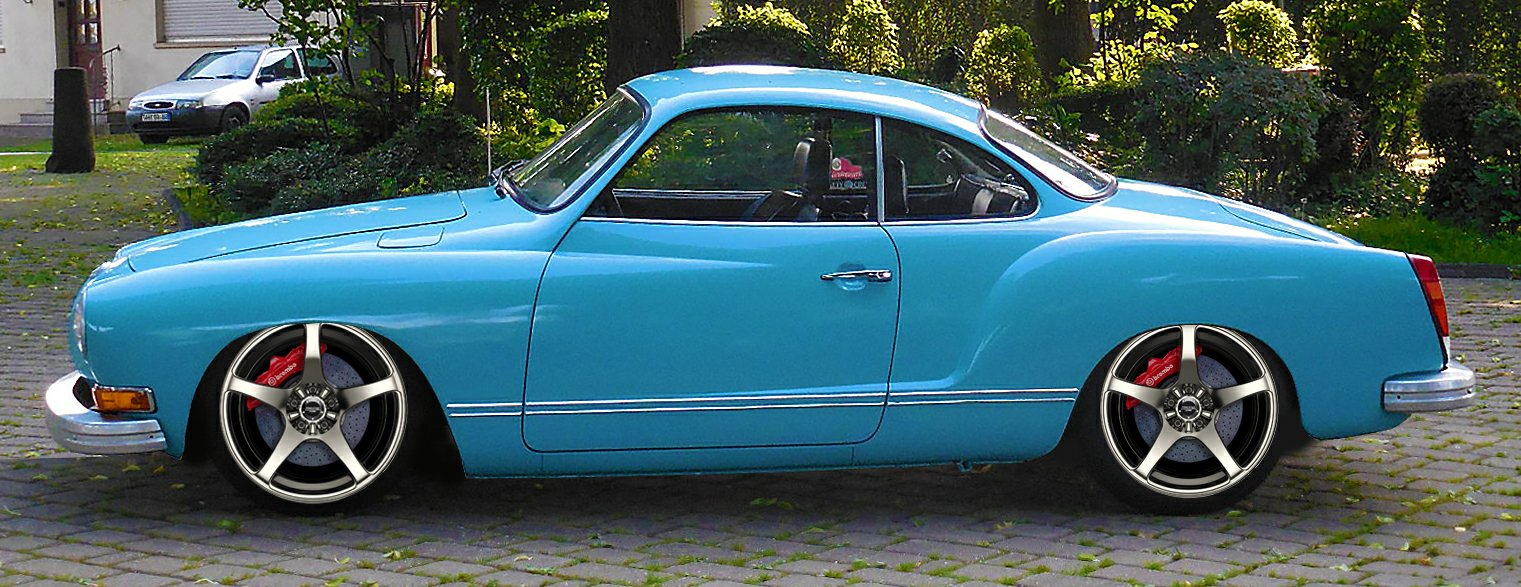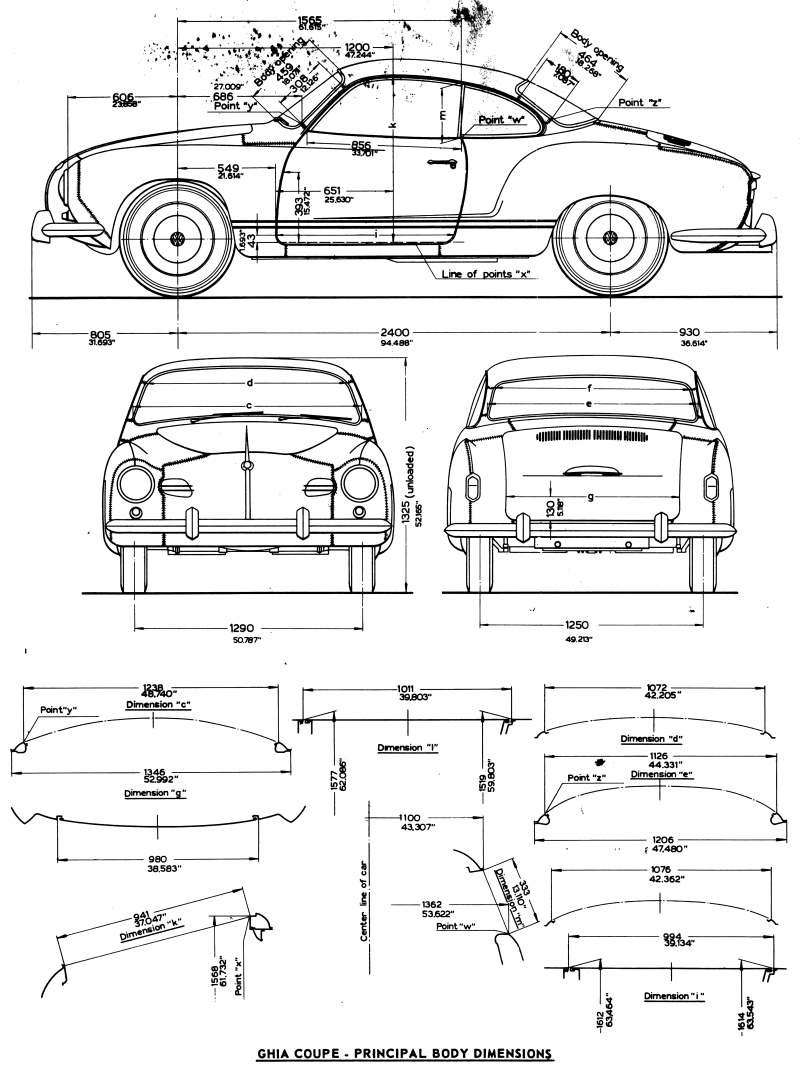
3-wire vs 4-wire Branch Feeder
3-wire feeders to detached structures that had no other parallel metallic pathways(eg. conduit, water and gas piping, communication cabling, etc.) were allowed up until the 2008 NEC code cycle.
From then on, 4-wire feeders have been required.
4-wire feeders to panels in attached structures have always been required.
3-wire feeder to detached(no longer allowed as of 2008):
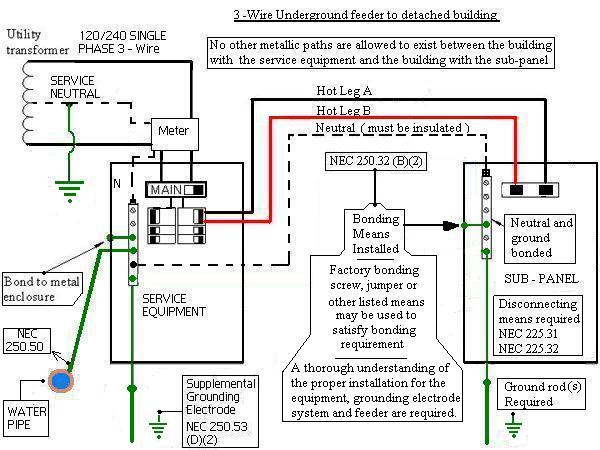
4-wire feeder to detached:
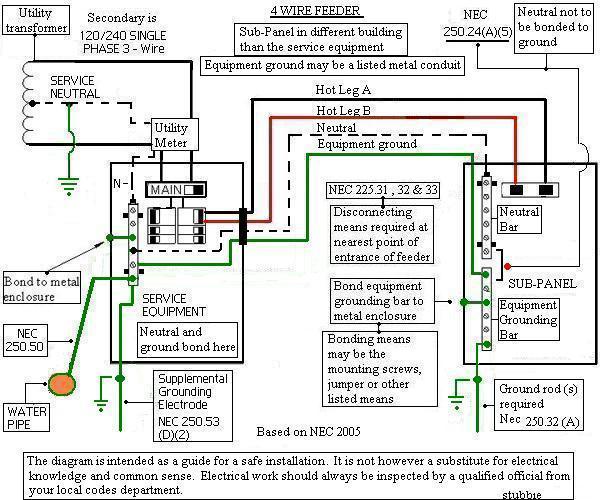
4-wire feeder to attached structure:
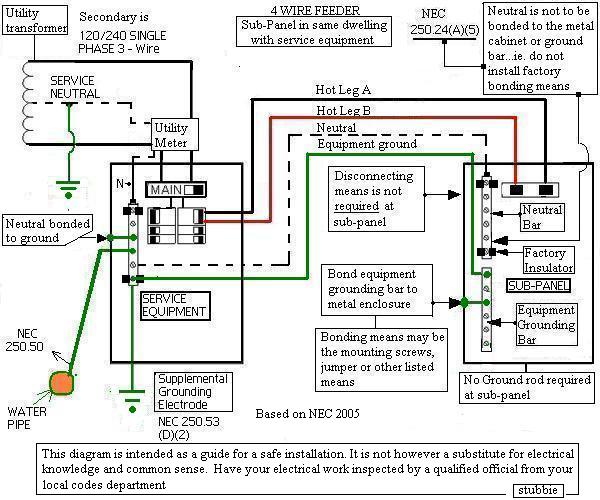
Properly Storing Seldomly Driven Show Cars
By taking some easy preventive measures, your driven show car will stay in tip top shape when not on the road.
Cover It Up
One of the most basic precautions you can take for your vehicle is to keep it securely stored. A vehicle left out in the elements is vulnerable to exterior damage. Not to mention, idle cars are a favorite hiding spot for little critters to build nests and wreak havoc. If possible, keep your vehicle stored safely in a garage, or at least under a car cover.
Keep the Battery Charged
A car battery can last up to five years in storage if a full level of charge is maintained. In the situation of a long-term storage, it’s probably best to remove the fully charged battery and store it in a cool, dry place. Another option is to purchase a low voltage trickle charger that automatically maintains the battery in a constant state of readiness.
The alternative to both of those methods is to install a main power switch. These are often used in marine applications, but they also work well on automobiles. When not using the car, turn off the battery. This isolates it from the parasitic drain of the various onboard systems. When you return, rotate the master switch to the on position, and the vehicle is once again ready for service.
Lube Is Your Engine’s Best Friend
In any type of storage situation, whether it’s long-term or short-term, it’s a good idea to have fresh oil installed. This new engine oil is rich in additives that help protect against corrosion and wear. To achieve the maximum benefit of these additives, crank the motor up to circulate the lubricant once or twice a month. This will also help keep the internal seals and gaskets from dry rotting and deteriorating.
Long-Term Fuel Storage
Fuel degradation is another common problem facing rarely driven cars. All fuel will degrade over time. In fact, the latest wave of ethanol-blended fuels does not store well at all. This isn’t a problem for drivers who run through a tank of gas within a three-month period of time, but go longer than that, and you could run into problems. The last thing you want to do after the car has been stored is to pull and flush the gas tank before you go for a ride. Thankfully, there are certain things we can do to extend the life of this petroleum product.
In a storage situation, moisture intrusion is an issue to contend with. As the tank goes through its normal temperature changes, moisture droplets form on the surfaces not submerged in gas. For this reason, it’s recommended to fill the tank with an ethanol-free gasoline before you park the car for the last time. These ethanol-free fuels have a much longer storage life than their blended counterparts. Gas stations throughout the United States offer corn-free products for small engines and boat owners. You can go to pure-gas.org to find a station near you that offers pure gas.
Finally, if you’re not sure how long the car will sit, take an extra step by adding the recommended amount of a fuel stabilizer product to the tank. A tank full of ethanol-free gas with a fuel stabilizer additive can last up to five years without significant degradation.
Get Pure-Gas.org on your mobile device!
Volkswagen Karmann-Ghia Year-By-Year Changes
Volkswagen Karmann-Ghia year-by-year changes were particularly languid when it came to the styling, packaging, and marketing of the cars, though both the coupe and convertible had their fender lines and headlamp height raised slightly in 1959.
Thereafter, most every successive change made to the Beetle was also made to the Karmann-Ghia. An exception was the Super Beetle’s MacPherson-strut front suspension, which would not fit under the Karmann-Ghia’s bodywork. However, the front anti-roll bar first seen on the Karmann-Ghia was adapted for 1960-model Beetles.
That same year, Karmanns got a new steering wheel that was dished for safety, and a hydraulic steering damper to quell kickback. A vacuum-operated clutch was also introduced as an option, though sources differ as to whether availability was confined to European-market cars.
For 1961, horsepower jumped to 40 at 4900 rpm and the final-drive ratio changed from 4.43:1 to 4.37:1 to slow engine speed, through the ratios of first and fourth gears were tightened in an effort to preserve “acceleration.”
Engine size increased to 1.3 liters for 1966 and horsepower rose to 50 at 4600 rpm. There was another bump to 1.5 liters and 53 horsepower for 1967, and a step to 1.6 liters and 57 horsepower for 1970, and finally, to 60 horsepower in 1971.
The 1600s were the quickest Karmann-Ghias, capable of 0-60 mph in about 21 seconds and a top speed of around 82 mph. A switch in final drive for manual-transmission models in 1972 increased top speed to 90 mph. The 1600s also had better stopping power, thanks to their standard front disc brakes. When VW revamped its power ratings for 1973, switching from gross to net figures, the Karmann-Ghia was rerated to 46 horsepower.
Safety came to the fore in 1968 when, per new U.S. regulations, Karmann-Ghias adopted round side marker lights on the rear fenders, as well as an energy-absorbing steering wheel and steering column, and front seats with integral headrests. An external gas filler door appeared on the upper front bodywork.
VW’s semi-automatic transmission was offered as an option starting in 1968, and as on the Beetle, cars ordered with it got the new double-jointed rear suspension.
Demand was still relatively healthy into the early 1970s, but the Karmann-Ghia’s days were numbered. Karmann needed all the space it could find to build the brand new VW Scirocco sports coupe, and ceased production of the Beetle-based cars in 1974.
It had built 283,501 coupes and 80,897 convertibles. An additional 23,577 coupes had been built at VW’s plant in Brazil. Sales in the U.S. had peaked in 1970 at 38,825, of which 5,873 were convertibles.
Concurrent with its production of the Ghia-styled, Beetle-based cars, Karmann also built a four-passenger coupe based on the Type 3 1500-series sedan introduced in 1961. This coupe was called the Type 34 and shared the wheelbase and air-cooled, rear-engine running gear of the sedan upon which it was based.
The Type 34, however, lacked the visual charm of the Karmann-Ghia models and it sold slowly. Buyers were cool to the styling, which had nice proportions and an airy greenhouse, but was awkward around the front where two large outboard headlamps and two smaller driving lamps flanked a metal Roman nose.
The Type 34 debuted in 1961 and was sold primarily in Europe. Ghia built a two-seat convertible version of the Type 34, but it did not go into production. With demand never very strong, production of the Type 34 coupe was halted in June 1969, after just fewer than 42,500 had been built.
It is the original Karmann-Ghias that introduced the world to the idea of a sporty Volkswagen. If the Beetle was the people’s car and the Volkswagen bus was the people’s van, then it might be acceptable to characterize the Karmann-Ghia as the “people’s Porsche.” Don’t try to race a Porsche with one, however. You’d lose.
A Brief History of the Volkswagen Karmann-Ghia
The Volkswagen Karmann-Ghia is a stylish, affordable collector’s car that’s inexpensive to buy, run and maintain.
The combination of almost voluptuous Italian styling, solid construction and durable components from the rear-engine Volkswagen Beetle gave the Karmann-Ghia a winning combination.
The first Karmann-Ghia was introduced in Europe in 1955 and arrived in America as a coupe in 1956. The convertible soon followed in 1958. It cost $300 to $400 more than the coupe, but was sportier to convertible-loving Americans, for whom it initially was built.
The slick little car was sold through 1974. Sales totaled an impressive 387,975 cars. And it could have lasted at least several years longer, except that the Karmann coachworks of West Germany needed more space to build Volkswagen’s new Scirocco coupe, which lacked the Karmann-Ghia’s flair.
Many Karmann-Ghias have survived, mostly in Sun Belt areas with no rust-producing salted winter roads.
As of August, 2009, a 1956-74 Karmann-Ghia coupe in really good shape is valued from $4,225 to $5,875, while one in excellent shape costs $9,700 to $12,925, says the Collectible Vehicle Value Guide. The pricier convertible costs from $7,425 to $8,650 in very good condition and from $15,575 to $18,150 in excellent shape.
Those figures are basically chump change for a desirable collectible car in today’s market.
The first Karmann-Ghia enhanced Volkswagen’s image when the Beetle was fairly new to America in the mid-1950s. Each one built reminded Beetle buyers that Volkswagen could make a dashing, solidly built car with the Beetle’s storied quality and reliability.
It couldn’t be any other way. because the Karmann-Ghia was a Beetle under its sleek body, with the same rear-mounted, rugged, air-cooled engine, chassis and other mechanical components.
Even the nicely padded convertible top with its glass (not plastic) rear window was easy to use, especially when compared to troublesome soft tops of popular British sports cars sold here in the 1950s and 1960s.
The Karmann-Ghia had a sportier dashboard than the Beetle’s, besides wide, highly padded adjustable front seats that made Beetle seats look cheap. But, after all, the Karmann-Ghia initially cost $2,245, or $900 more than the Beetle and was expensive by Volkswagen’s 1950s standards.
The most desirable Karmann-Ghia is arguably the 1967 model with its 1.5-liter engine. That’s because it was the last one unaffected by U.S. safety and emissions regulations.
This special Volkswagen was easy to buy and service, unlike most foreign sports cars, because many areas of the country had a conveniently located VW dealer. Many Karmann-Ghias have survived, mostly in Sun Belt areas with no rust-producing salted roads.
Volkswagen never called the Karmann-Ghia a sports car, although its tight fold-down back seat essentially made it a two-seater.
One clever VW advertisement pictured it with racing stripes that made it look ready for the track. “You’d lose,” said the advertisement’s tag line.
At first, the Karmann-Ghia just had the first Beetle’s fuel-stingy 1.2-liter, 36-horsepower four-cylinder engine. But acceleration was acceptable because the car only weighed approximately 1,750 pounds, or about 150 pounds more than the Beetle.
The Karmann-Ghia was three inches longer than the Beetle and nearly seven inches lower, although front head room was decent. Its low-slung body helped it handle better and made it more resistant to crosswinds than the oddly shaped Beetle, although it had the Beetle’s excellent traction.
The Karmann-Ghia’s aerodynamic body let it reach almost 80 mph, which was acceptable because many high-speed interstate highways weren’t in existence during much of its life.
The Karmann-Ghia’s styling was from Italy’s famous Ghia studios, which worked on exotic Italian sports cars. It’s unclear who did the Karmann-Ghia’s actual styling work. But strong styling influences were from American Virgil Exner, who created Chrysler’s sensational 1955 “Forward Look” styling, and Italian Mario Boano. Ghia styling director Luigi Segre, who helped promote the Karmann-Ghia project, combined their ideas with the work of other Ghia personnel.
The Karmann-Ghia had a specially crafted body from the respected Karmann coachworks, which was making solid Beetle convertibles in the early 1950s. It saw a car such as the Karmann-Ghia as a way to make more money.
Chassis side rails were widened to handle the four-inch-wider Karmann-Ghia body. A front anti-sway bar was added for better handling, and there were different springs and shock absorbers.
Beetles without bodies were shipped from Volkswagen’s main plan to Karmann’s facilities, where Karmann-Ghia bodies were made, painted, trimmed and put in Volkswagen’s distribution system.
That process wasn’t easy. The complex Karmann-Ghia body called for many internal pressings to be welded together and to the main panels. Almost hand-construction methods were required. They included filling, filing and sanding all seams before painting. All that helped make the car look great, but led to expensive repairs if a body panel needed replacement.
Beetle sales were climbing so rapidly that Volkswagen did little to promote the Karmann-Ghia until 1961, when it got 40 horsepower. After that, the car just kept getting better in small ways because it received the mechanical changes that improved the Beetle.
The Karmann-Ghia was one of those cars with virtually perfect original styling, so only subtle styling changes were made as the years passed. For example, larger parking lights, taillights, turn signals and hazard-warning lights followed new U.S. safety regulations and industry trends.
Front disc brakes were added in 1965, and a semi-automatic transmission was made available for 1968.
Horsepower climbed to 53 in 1967,and the car could hit 90 mph by 1972 with its larger 1.6-liter, 60-horsepower four-cylinder.
The Karmann-Ghia’s main attractions, though, were its sporty appearance and quality, not its performance. Still, it was fun to drive and could keep up with traffic.
Just as Chevrolet’s rear-engine Corvair is becoming a desirable, affordable collector car, the Karmann-Ghia is finally getting its day in the sun.
About time, too.
Wheel Backspacing for Airkewld 4″ Narrowed Beams
Per Pete Skiba, an 7 inch wheel with a backspace of 5.125 to 5.5 inches will work with their Probuild 4″ narrowed beams.
This having been said, the 19 inch Porsche wheels I’m looking at will work with a moderate spacer.
Understanding the Porsche 911
How to install Compufire Ignition for VW in a 009 Distributor
How To Paint a Car
Painting Basics & Techniques
